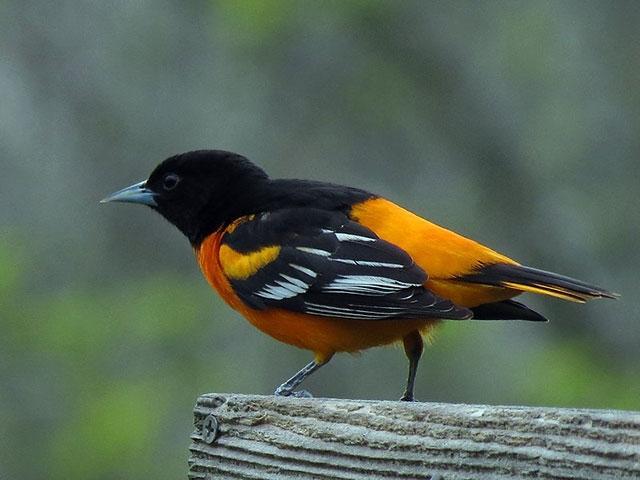The Golden Oriole, also known as the Eurasian Oriole, is a vibrant bird species belonging to the Oriole family (Oriolidae). These captivating creatures boast a striking plumage and melodious songs, making them a beloved sight and sound across their vast range.

Physical Appearance:
Golden Orioles are medium-sized birds, measuring around 20-30 cm (8-12 inches) in length. Their plumage is a captivating blend of colors, featuring a combination of bright yellow, black, green, and red. Male orioles typically sport a more dazzling display of colors compared to their female counterparts. The birds possess a sturdy, pointed beak well-suited for their insectivorous diet. Their legs and toes are relatively short but strong, enabling them to grasp onto tree branches with ease.
Habitat and Distribution:
Golden Orioles favor deciduous forests, open woodlands, and orchards as their primary habitats. They typically reside in the upper canopy of trees, rarely venturing down to lower levels. These birds are found across a wide expanse of the Northern Hemisphere, including Europe, Asia, and parts of Africa.
Behavior and Diet:
Golden Orioles are renowned for their exceptional singing abilities, producing a beautiful and far-reaching melody. Their songs are often likened to the sounds of flutes, whistles, or stringed instruments. These harmonious tunes are most commonly heard during early mornings and late evenings.
As omnivores, Golden Orioles exhibit a varied diet, consuming a range of food items. Insects form a significant part of their menu, along with fruits, nectar, and small invertebrates. They often forage for food in small flocks.
Breeding and Nesting:
Golden Orioles construct their nests high up in tree branches, utilizing twigs, leaves, and grass as building materials. Each clutch typically consists of 2-4 eggs. Both male and female orioles participate in incubating the eggs and raising the hatchlings.
Significance and Conservation:
Golden Orioles play a crucial role in maintaining ecological balance. They help regulate insect populations, preventing them from causing damage to crops and vegetation. Their melodious songs add vibrancy and joy to the natural environment.
In Vietnam, Golden Orioles hold cultural significance, appearing frequently in folk songs, proverbs, and poetry. They are often associated with love, fortune, and happiness.
Unfortunately, Golden Oriole populations face threats due to hunting and habitat loss. Conservation efforts are essential to safeguard these remarkable birds for future generations.
Conclusion:
Golden Orioles are captivating creatures that grace our world with their beauty and song. Their presence enriches ecosystems and cultural traditions. By taking steps to protect their habitats and combat hunting, we can ensure that these vibrant birds continue to serenade us with their melodies for years to come.





